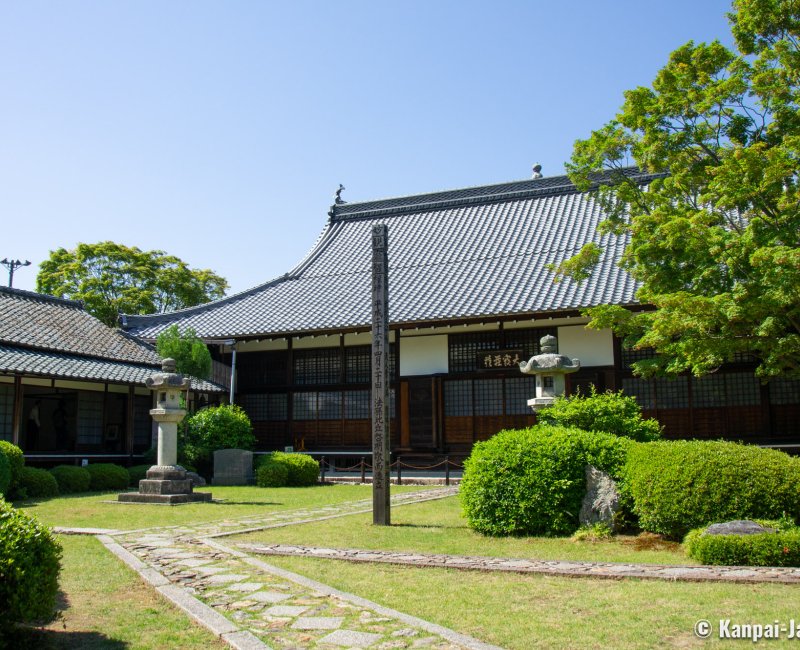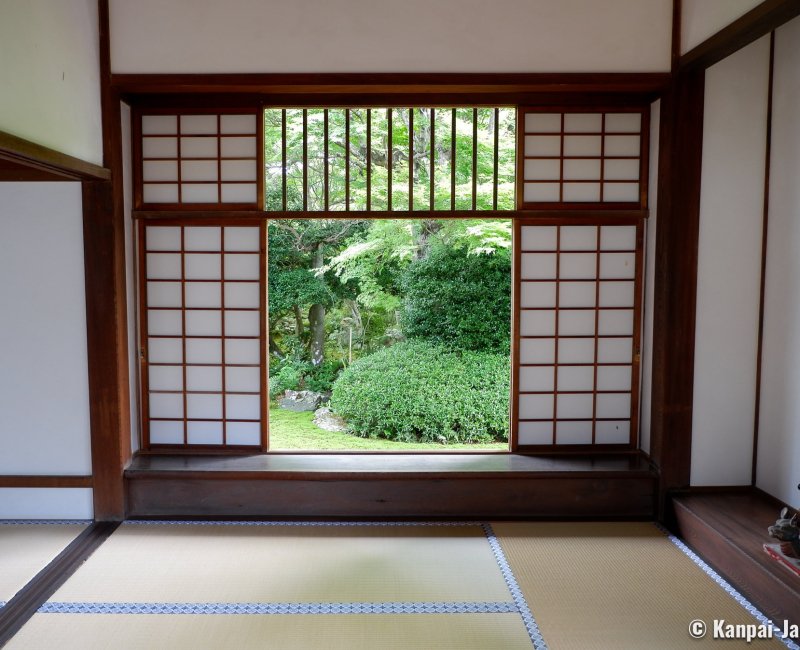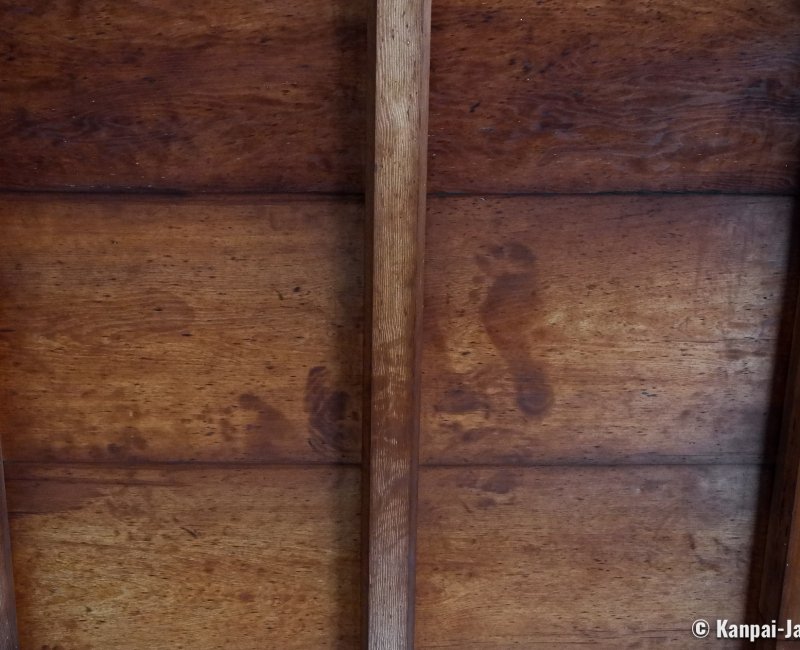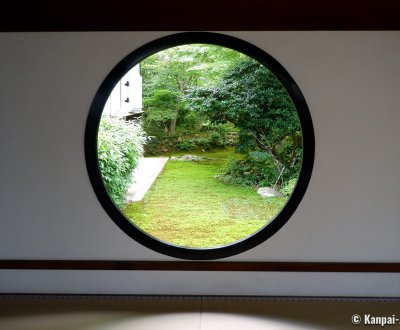Genko-an
Zen Windows Opening on Maple Trees
Genko-an is a small Zen Buddhist temple of the Soto sect located in the north-west of Kyoto. While the autumn view on red maple trees from its main pavilion’s windows is renowned, the place is filled with serenity all year round, and offers a travel back in time through the remains of Fushimi Castle bloody history.
In the west of Kyoto, Genko-an is known to Japanese people but few foreign visitors find their ways to its premises. Despite being located in the vicinity of the very famous Kinkaku-ji, it sparsely benefits from the golden pavilion’s touristic crowd that flows south towards Ryoan-ji and Ninna-ji temples rather than going to the north.
Takagamine residential area is home to several small neighborhood temples that can be visited at a leisurely pace. Some hide wonderful examples of Zen Buddhism art, such as the Genko-an, founded in 1346 by a Rinzai priest and passed under the Soto school patronage in 1694 thanks to Manzan Dohaku (1635 - 1715).

The main hall hondo is made of a large tatami room opening on the Japanese garden surrounding the building and is the focus of the visit. Its center is occupied by a Buddhist altar and its three statues dedicated to the historical Buddha Shakyamuni.
From within the pavilion, the eye is drawn to the outside and the elevated wooden flooring engawa offers a place to enjoy a first view on the karesansui style Japanese garden, both green and mineral. The temple’s most renowned views on Japanese maple trees are framed by 2 traditional windows of characteristic geometrical shapes, intended to favor meditation in order to gain true wisdom:
- The round window, called Satori no mado, is the "Window of Enlightenment" and refers to the final Zen state reached by the Buddhas, the circle symbolizing the universe; and,
- Its counterpart the squared window, called Mayoi no mado, the "Window of Delusion," that is to say the hardships of the human life: birth, aging, sickness and death.
At Genko-an, the view on the maple trees is particularly beautiful and anticipated in autumn, when the momiji 🍁 trees profusely redden. The end of November, that marks the peak of fall foliage, is therefore the most crowded time for the temple. We also recommend going in spring 🌸 and at the beginning of summer when the new ao-momiji display their bright soft green leaves.

The best temple to watch the bloody ceilings
In the main hall, raise your eyes to carefully watch the wooden ceiling, built from boards salvaged at Fushimi-Momoyama Castle 🏯, in the south of Kyoto. You will notice many brown stains as well as the distinctive traces of human footprints and hand-prints. These bloody ceilings, called Chitenjo, bear witness of the siege of Fushimi’s tragic end.
In 1600, samurai Mototada Torii ⛩️ and several hundreds of warriors retainers of warlord Tokugawa Ieyasu committed suicide by seppuku in the wake of the keeps’ seizing. As a result of the bloodshed, the floor was soaked in blood for several days. When Fushimi Castle was dismantled, its bloody floorboard was reused in the construction of 5 temples in the area:
- Honen-in in Ohara, in the mountains in the north of the city;
- Shoden-ji and Genko-an, in the north-west of Kyoto;
- Yogen-in in the east of downtown Kyoto; and,
- Kosho-ji in Uji.

The souls of those who died by ritual suicide can therefore rest in peace. Genko-an’s bloody ceilings are known for their good preservation, and will certainly delight history of Japan amateurs.
While its grounds is small, the temple is a very good surprise with a Zen ambiance and well-maintained buildings to visit, we thus highly recommend to give its discovery a shot.


